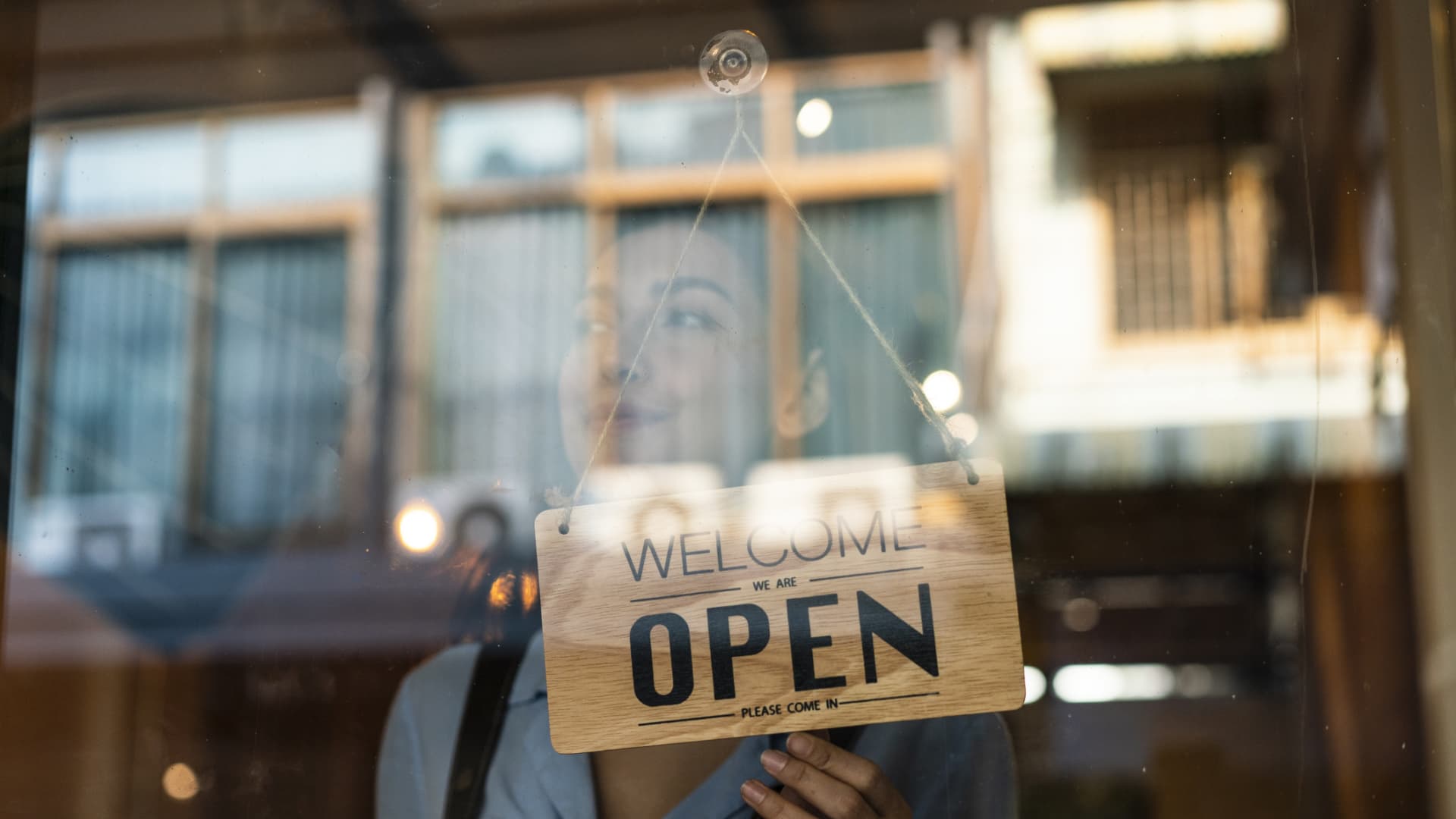
Starting one’s own business has long been a part of the American tapestry of dreams. But more than ever, becoming an owner doesn’t involve managing a massive payroll or activity-filled warehouse. In fact, it doesn’t require anyone other than yourself.
The nation’s 29.8 million solopreneurs — businesses with no paid employees — contribute $1.7 trillion to the U.S. economy, representing 6.8% of total economic activity, according to the most recently published U.S. Census Bureau data. California led the way with 3,502,950 solo businesses in 2022, but Florida was tops in per capita solo start-ups, with about 13.3 non-employer establishments per 100 people, according to the U.S. Census Bureau. The data was released in May, but only covers through 2022.
More recent data sources also point to the “solopreneurship” business model growing at a torrid pace. Entrepreneurs are filing an average of over 440,000 applications every month – a rate over 90% faster than pre-pandemic averages, according to the Small Business Administration.
While side hustles have been a staple of the American economy for years, it may seem counterintuitive that amid tariffs and high interest rates, the ranks of small business owners are growing. But one-person businesses are growing faster than ever, and experts agree that artificial intelligence is likely a factor.
“I think the barriers to entry for being a small business owner now are probably the least they’ve ever been,” said Mark Valentino, head of business banking at Los Angeles-based Citizens Bank. He estimates that an interested individual could start a side hustle in 10 minutes and start making money, with AI providing a ready-made virtual assistant and ChatGPT available to assemble a business plan within minutes.
“And that business plan would probably be solid enough for a first draft to go to a bank or a banker or an SBA lender and say, ‘Hey, you know, I got a business plan and I have a little bit of money and I want to start this venture and how can you help me?’ We’re definitely seeing that trend,” Valentino said.
Millions of TikTok businesses, many run by under-30 women
Social media is also powering these numbers as solopreneurs are connecting with interested consumers online instantly, customers bases that once would have taken years to identify and build.
Esme Lean, head of small business at TikTok, points to a creator who recently moved 750 bottles of monk fruit chamoy (probably not the first – or second–item on most people’s shopping lists) in her first week online. She developed the traditional Mexican topping with monk fruit instead of sugar to cater to some dietary restrictions.
“You don’t even have to have a business idea; it could just be something interesting or something you love that you end up creating a business from,” Lean said.
There are an estimated 7.5 million businesses on TikTok, and after being banned by a Congressional law that was later upheld by the Supreme Court, the social media platform now seems on the verge of being permanently saved by a deal between the Trump administration and China.
Many TikTok businesses are soloists with shops selling obscure items, Lean said. The most significant growth is among female entrepreneurs under 30, tapping into what she described as a craving for authenticity that is relatively inexpensive to build a business around. In previous generations, reaching a profitable audience would have required an advertising campaign that was out of budget for most.
“These stories reflect a much larger wave of entrepreneurs who are growing not by spending heavily on traditional marketing, but by relying on creativity and community,” Lean said.
The creator economy is a vital driver of the solopreneur boom, according to Saurav Pathak, clinical associate professor at the Raymond A. Mason School of Business at William & Mary. “It has become extremely easy to build personal brands and get paid directly by passionate fans via platforms like YouTube, TikTok, and Patreon,” Pathak said. But he added that this is only part of a bigger trend, as consumers find themselves increasingly disconnected from sprawling corporations. “They prefer authentic, niche, or personal brands to large corporations for the personal touch and hands-on connection with founders that one-person companies can provide,” he said.
Leaving the traditional corporate career behind
Whether AI or social media, Najiba Benabess, the business dean at Neumann University, says the rise of the solopreneurs reflects a significant shift in use of technology and how workers across the economy view professional opportunities.
“Technology has lowered barriers to entry; one person with a laptop can now run a global business,” Benabess said, noting that at the same time, people are prioritizing flexibility, autonomy, and purpose over traditional career paths.
“Solopreneurship also responds to rapid changes in the labor market, where skills and creativity are more valuable than organizational structures,” Benabess said.
Angela Berardino credits AI with being able to strike out on her own as the solo founder of boutique marketing firm Brouhaha Collective. “I know, everything is AI these days, but at a startup level: AI has given me an army of admins and interns that take notes on calls, do first rounds of research, and help me analyze large data sets,” she said.
Three years ago, Berardino says, she doubts it would have been possible to start her business, but now it has grown so much that she leads a team. “AI is the reason I was able to be a leader of a team out of the gate,” she said.
Flexibility and family are also driving the trend for solopreneurs like Berardino. “I’m a solo parent to a young child, and the reality is that no matter how much companies talk about prioritizing supporting families, they rarely put real programs in place,” she said, adding that for women in particular, balancing corporate and home is near impossible.
“If you’re ambitious, the lack of support in traditional business models is a huge incentive to start your own thing,” Berardino said.
As she has grown the business, most of the members of her team are moms who had corporate careers and now want to work 25-30 hours a week, at a high level but with flexibility, a model that she says thrives in a startup. “I can’t help but suspect there are other solo founders who feel like I do: the corporate world had a cap as long as I was trying to balance my two worlds under their rules. And once you feel that limitation, it makes jumping to your own thing a lot more manageable,” Berardino said.
The entrepreneur economy cuts across all ages and demographics.
“I am my staff in my tiny business,” said Pennsylvania resident Susan Bernstein, 77, who started Elegant Endings, a business that reworks old and discarded jewelry as something to do during her retirement. “Each rework is one of a kind. I’ll never be on HSN or QVC, but the individuals and repeat customers make retirement fun.”



